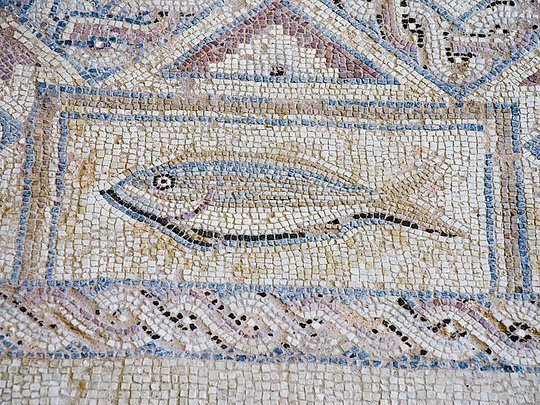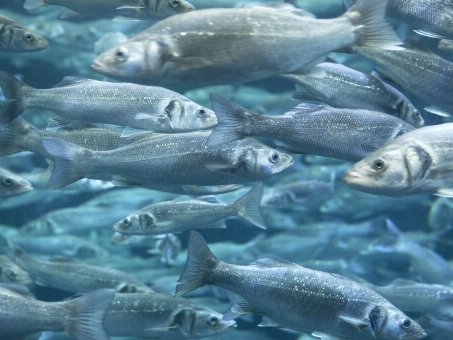Phytogenics in aquaculture production (part 1)
The deep sea is a place full of secrets. About 95% of it is unexplored. But even the fish that land on our plates have much to offer. Do you know that most of them come from aquaculture? Read more in this article...

Did you know that Aquaculture has a long history?
People all over the world have been farming fish since at least 1500 BC. In China, ancient writers describe carp farming in flooded rice fields from around 1100 BC. Tomb paintings show that Nile-Tilapia was already reared in captivity by the ancient Egyptians. In ancient Rome, people from wealthy social classes kept fish and crustaceans in tanks. Farming oysters were considered a delicacy as early as 100 BC. Aquaculture has a long history – now it is time to look to the future. Discover with us the benefits of phytogenics in aquaculture production. How can they change the face of aquaculture and lead to a sustainable way of fish farming?
World capture fisheries and aquaculture production

Let’s dive deeper into the fishy topics…
The immune system of fish differs from that of mammals
In terms of developmental history, fish are among the first organisms to have both types of an immune system – an innate immune system and an adaptive immune system (Boehm et al., 2012). The immune system of fishes is conditioned by the particular environment, but also by their poikilothermic condition (Tort et al., 2003). In fish, immunocompetence depends more on fish weight rather than on age, mainly due to the need of a minimum number of immunocompetent cells. All Gnathostomata (the jawed vertebrates) share an essential immune structure characterized by: a highly conserved innate system, consistent development of a combinatorial immune system, and bilateral communication between components of the innate and adaptive immunity.
Did you know?
Over 95% of all animals and plants have an innate immune system. Nevertheless, they can successfully withstand continuously developing pathogens, which is why great importance should be attached to the investigation of the innate part of the immune system in fish.
The structure of the adaptive immune system seems primitive to that of mammals:

although fish form a spleen and a thymus, certain immunoglobulin classes as well as lymph nodes, Peyer´s patches, bone marrow and lymph vessels are missing. Despite the supposedly weak adaptive component of the immune system, fish have evolved over a very long period of geological history and represent the most species-rich vertebrate class.
A prerequisite for this is the ability to adapt to changing ecosystems as well as to new pathogens – in other words: high immunological competence. It has only recently become known that fish produce antibodies that are found in blood and mucus and are available to the diagnostician for serological investigations in the form of IgM. In recent years, IgT has been described as another unique immunoglobulin for fish, a functional equivalent to the IgA found in mammals (Fischer and Kato, 2014).
Did you know?
The main mucosa-associated lymphoid tissues (MALT) of teleost fish are the gut-associated lymphoid tissue (GALT), skin-associated lymphoid tissue (SALT), the gill-associated lymphoid tissue (GIALT) and the recently discovered nasopharynx-associated lymphoid tissue (NALT). Until recently, teleost fish B cells were thought to express only two classes of immunoglobulins, IgM and IgD, in which IgM was thought to be the only one responding to pathogens both in systemic and mucosal compartments. However, a third teleost immunoglobulin class, IgT/IgZ, was discovered in 2005, and it has recently been shown to behave as the prevalent immunoglobulin in gut mucosal immune Responses (Salinas et al., 2011).
For fish to grow, they need food. Not only vegetable additives or minerals, but above all fish oil and fish meal are of utmost importance here. While fish oil mainly provides energy and essential omega-3 fatty acids, fish meal mainly provides valuable protein.
Fish oil – why is it so special?
Fish oil is obtained by drying and pressing fish. It is a valuable resource for the nutrition of fish and humans, whose demand is constantly increasing. The special feature of fish oil is its high content of polyunsaturated fatty acids (PUFA) – including in particular the essential omega-3 fatty acids eicosapentaenoic acid (EPA) and docosahexaenoic acid (DHA). These omega-3 fatty acids can be formed by certain microalgae and accumulate via the food chain, especially in high-fat cold-water marine fish.
Fish need these fatty acids to maintain sufficient elasticity of the cell membranes at lower water temperatures, for example. We humans are not able to synthesize essential fatty acids by ourselves. However, omega-3 fatty acids play an important role in human metabolism and must therefore be supplied by food. As fish oil is of great importance for human nutrition and it is a valuable component of a species-appropriate fish diet, fish oil has been used for decades, particularly in aquaculture (especially for carnivorous fish species, and increasingly also in shrimp farming). While fish meal primarily provides valuable protein, fish oil provides not only energy but also the valuable essential omega-3 fatty acids EPA and DHA. Therefore, fish meal and oil are very important in aquaculture and can only be completely replaced in specific cases in carnivorous fish species.
What about alternatives?
About 16 million tons of anchovies and other smaller fish have to be caught every year to produce 1 million tons of fish oil and 5 million tons of fish meal. But the massive fishing is at the expense of the environment: According to the FAO, about 30% of fish stocks are already overfished. This has not only ecological but also economic effects: aquaculture can only grow in a sustainable way. The FAO also estimates that prices for fish meal and fish oil are expected to rise by 90% and 70% respectively by 2030.
In view of the rising prices of animal raw materials and overfishing, alternatives for fishmeal and fish oil are increasingly being used.
The fact that the use of plant-based alternatives is not easy is particularly evident in the example of fishmeal:
There are increasing efforts to add additional amino acids (such as methionine, lysine and threonine) to vegetable protein sources, such as soya, and thus replace the supply of fishmeal. Thereby the problem is, that these amino acid supply must be adapted exactly to the needs of the respective species.

If certain threshold values for amino acids in the feed are undercut during feeding, this will become a limiting amino acid affecting growth performance, feed efficiency and other health related issues. If the amino acid content, such as methionine, no longer meets demand, the fish cannot optimally utilize their food – this potentially could lead to an increased excretion of nitrogen-containing degradation products.
Did you know?
The limitation of marine raw materials in aquaculture diets and their replacement by more sustainable protein and lipid sources of terrestrial origin, in some cases, is associated with negative consequences on the metabolism and immune system of aquaculture species and may slow down the development of the sector. The global trend to ban antibiotic growth promoters, for fear of the development of resistant bacterial strains, and to protect consumers’ health, has driven the sector to invest into research in natural alternatives particularly.
References upon request.
Ready for the phytogenic facts of aquaculture?

Anne Oberdorf
Anne has always been fascinated by the unknown, the diversity and beauty of nature. Her love for nature brought her to Delacon in 2018 after studying agricultural sciences, where she worked as Technical Communications Manager and later as Product Manager Aquaculture. Since February 2021, she has been taking a new, natural career path outside of Delacon.










